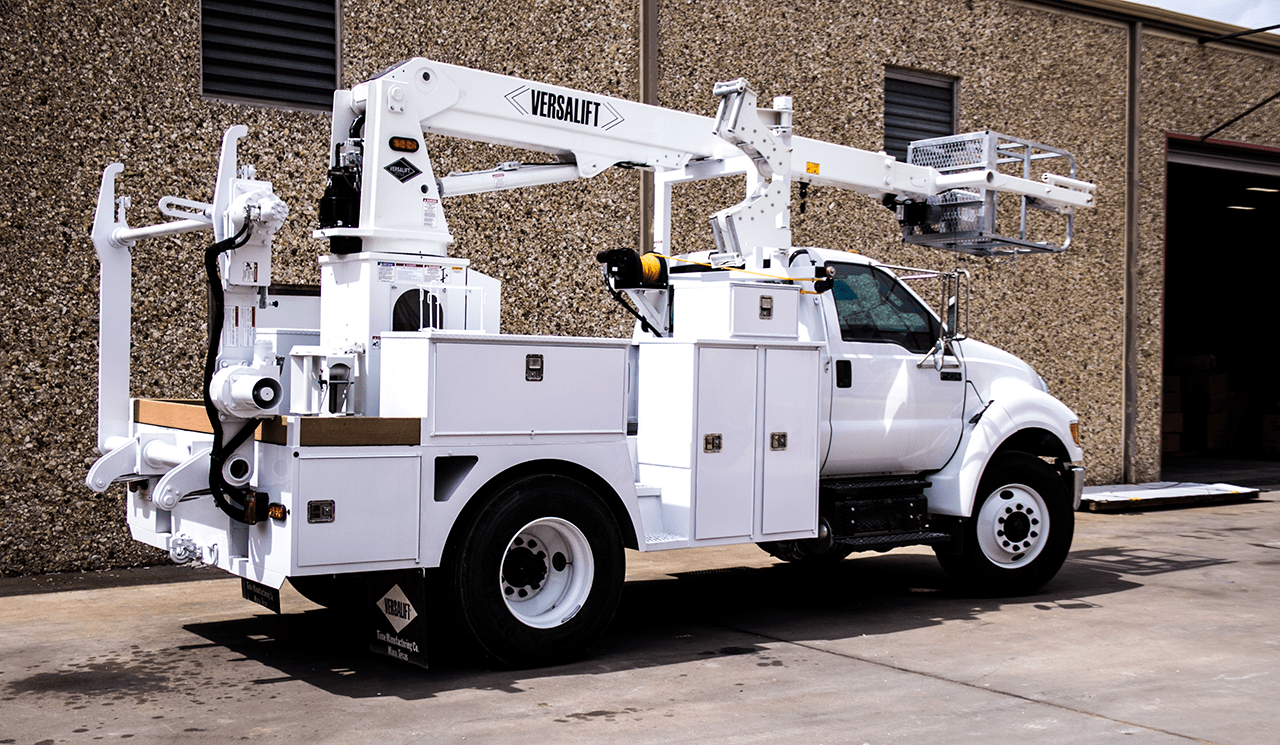Cable Placer vehicles are unique pieces of mobile equipment that have proven to provide the most cost effective method of construction and maintenance of Cable TV and Telecom aerial cable networks. These cable placer trucks are upfitted and configured to support a complete set of cable handling equipment to provide operators with the most efficient tools for the specific cable placing tasks they are required to perform. These tasks can be as simple as placing strand down a pole line in order to repair aerial plant due to a utility pole accident. They can be far more complex as well, including the installation of complete pre-lashed and finished aerial plant.
Cable placer vehicles have some unique characteristics. Towering, which is the process of driving along the aerial plant with an outside plant technician aloft in the basket, is the key to the high productivity and cost effectiveness of these cable placer vehicles. With a crew of just two persons, a cable placer vehicle that is equipped to carry reels of strand and cable provides telecommunication fleets with an opportunity to minimize their aerial plant construction and maintenance costs. Beyond lowering costs, cable placer units create safety. By using cable placer vehicles, fleets can ensure that less personnel are on the job site, which limits overall exposure to risk.
Aerial plant construction methods have been heavily based upon the use of cable placer vehicles, which have been in use since 1966. This was when the first cable placer vehicle was developed with the input from telephone construction personnel. Since that time, aerial plant materials have evolved into today’s high speed, high bandwidth, fiber optic cables but the method of placing them has remained the same. The benefits of the cable placer vehicle to the telecomm and CATV industries ensure that they will remain essential to the fleets that use them.
Cable placers deliver incredible value to a telecommunications fleet. The importance of cable placer vehicles and their high productivity in placing aerial plant becomes very apparent, especially after the occurrence of major weather, fire or other natural disasters. Today, our world relies heavily upon the ability to transfer data for business, social communication, and other applications, including government administration and national defense. It is understood that affected communications infrastructure must be repaired and service restored as quickly as possible. During such situations, organizations that have cable placer vehicles in their fleets provide mutual assistance to those companies in areas that have been affected. The millions of miles of aerial communication plant in North America and around the world will continue to require the need for cable placer vehicles long into the future.

